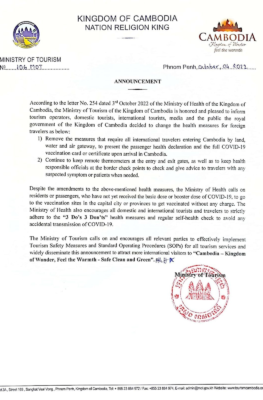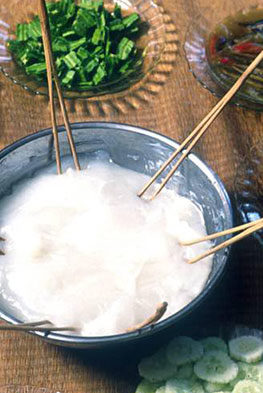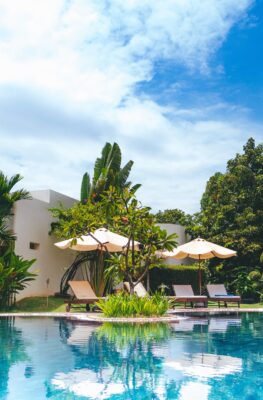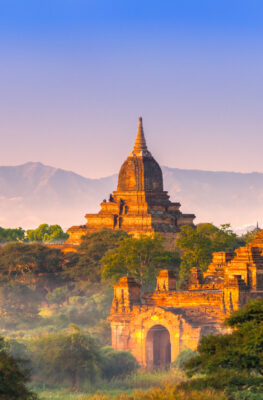Published on December 7, 2017
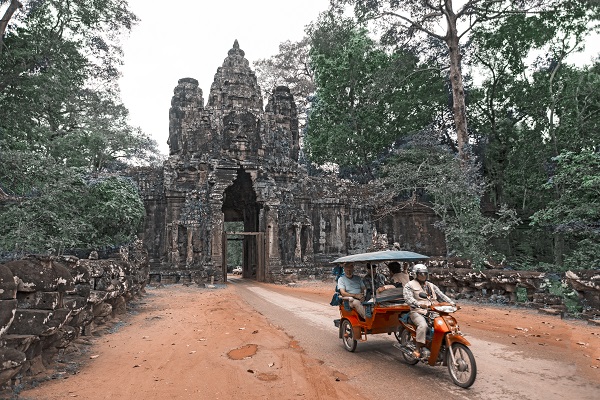
Singaporean photographer and travel writer Jeremy Goh Guo-Hua joins us for a guest post that retraces Southeast Asia’s most famous backpacker trail. Check out Jeremy’s writing (and photography) at Asia361. Follow Jeremy’s work at Trippin’ Creatives website, or visit their social media profiles on Facebook, Twitter, Instagram and Youtube.
Since the 70s, Western thrill seekers, meaning-of-life searchers, gap year trippers and day-trippers have plunged down a trail that winds through Southeast Asia’s bustling cities, tribal villages and twisted jungle paths – staying at humble hostels with a single familiar fruity breakfast that gives this itinerary its name: the Banana Pancake Trail.
But how did it get its start?
At the height of the counterculture revolution of the mid 70’s, the Lonely Planet published a best selling guide to traveling in Southeast Asia. The word was out, and as the number of visitors to the region swelled, so too did the number of establishments that catered to the foreign influx.
The breakfast food that proprietors determined to be the Western equivalent of porridge was the banana pancake, and over time, this became the hallmark of lodgings intended for youthful backpackers.
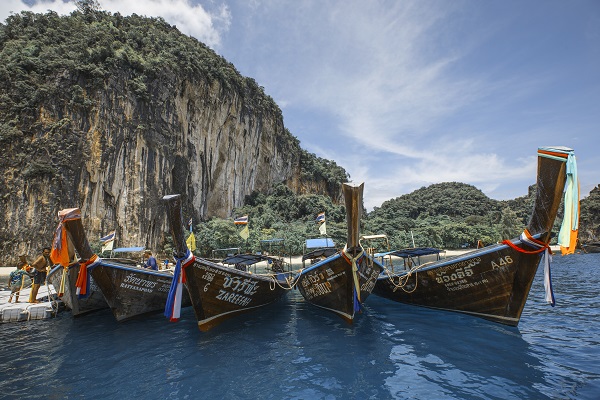
Setting Off in Search of Banana Pancakes
Today’s Banana Pancake Trail is not a clearly demarcated route. But like the Hippie trail across the Middle East and the Enlightenment-era Grand Tour of continental Europe, the Banana Pancake Trail is a commonly-held celebration of personal expression, freedom and knowledge.
The trip has no age limit and is an egalitarian rite of passage for everyone, young and old.
Many visitors start at Khaosan Road in Bangkok, Thailand, the gathering point for backpacker travel in the region. Here – at the staging point for expeditions deep into the interior – travelers mingle, exchange ideas, trade stories and find companionship.
East of Bangkok, the former French colonial holdings of Indochina occupy a large swath of land stretching the length of the mighty Mekong, from its delta in South Vietnam to the highlands of Laos where it extends into China.
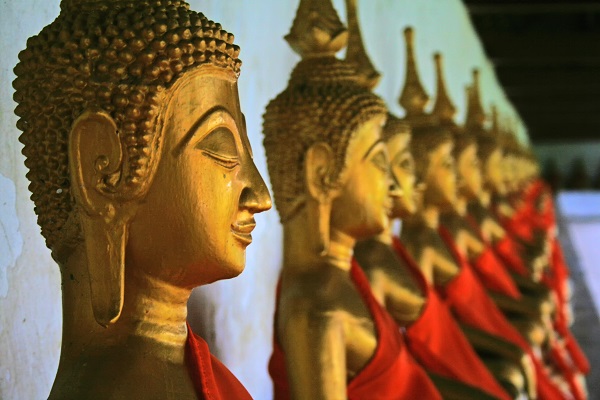
Exploring the Formerly French Indochina
The Khmer empire, centered around Siem Reap, Cambodia left behind a rich inheritance on the land: Wat Phou in central Laos, Preah Vihear in Northern Cambodia, Angkor Wat in central Cambodia, Pimai in Eastern Thailand, and the My Son ruins in central Vietnam.
Crossing from Thailand into Cambodia, then Laos and finally Vietnam, this branch of Southeast Asia holds a cultural and natural wealth of attractions easily linked by a network of buses.
Cambodia’s capital Phnom Penh sits at the confluence of the Mekong, Tonle Sap and Bassac rivers. Life here is vibrant, exciting, yet gritty. A network of roads that fan out from the city lead to provincial regions filled with centuries old ruins, waterfalls, and rivers inhabited by the rare Irrawaddy dolphin.
Laos is a long, sinuous strip of land dominated by high elevations. The Bolaven plateau hosts coffee plantations but the crowning jewel is Luang Prabang – a charming city of unique Buddhist temples.
Pressed against its Eastern borders, with a generous allocation of beachfront real estate is Vietnam with gems such as Phu Quoc island and Nha Trang, where the 2008 Miss Universe competition was held.
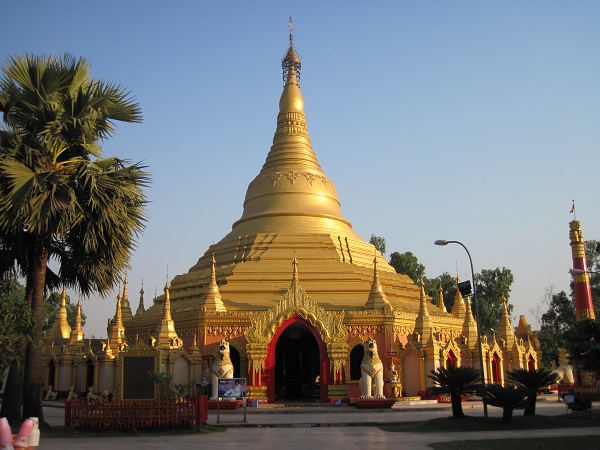
Former British Sphere of Influence
As you travel south, you’ll enter territory where the British Empire once carved out its own sphere of influence.
The experience across the Malay peninsula and the former Burma is as varied as the different ethnicities that live here. Indians, Malays, Chinese, Arabs, Burmese and over 50 different ethnic groups from all the major religions created what is now a cultural melting pot.
The excellent train and ferry system is, in many ways, the most lasting legacy of the British Empire: a gift for travelers journeying to almost every corner of the former Straits Settlements and British India.
Starting in Singapore is a good way to experience the diversity of the region in microcosm. As Asia’s economic powerhouse, many people from the neighbouring countries have arrived seeking employment and brought with them a bit of their culture and culinary traditions.
Moving northward to Malaysia, local food, the cooling hill stations at Genting and Cameron highlands, and port cities on the West coast have drawn tourists from around the world.
Further north than even Thailand, you’ll find Myanmar, formerly a province of British India. Ancient ruins at Mrauk U and Bagan rival the more famous ones in Cambodia. In its northernmost state, Kachin, one can find snow capped mountains and tribes people still adhering to their traditional fashions and habits.
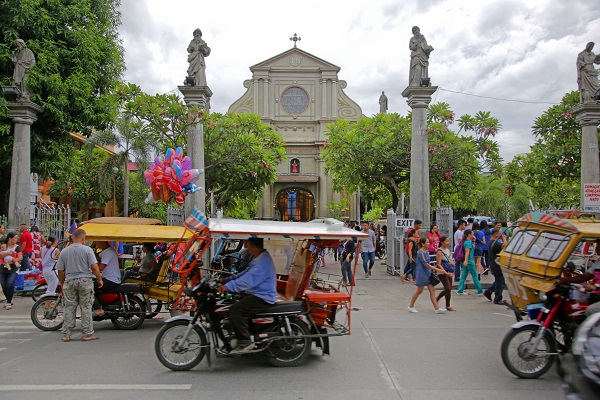
Off to the Islands
The archipelagos of Indonesia and the Philippines form the maritime leg of this Asian expedition and traversing them is a complete trip in its own right.
Both countries lie in the Pacific ring of fire, and volcanos both live and dormant are a key feature of the landscape. The fertile soil is rich in nutrients and support a variety of fruits, such as mangoes, durians amongst many others.
In Indonesia, the large Buddhist complex, Borobudur, the artisans of Yogyakarta and Solo, and the beaches of Bali are popular amongst tourists. The more daring ones venture further East to Lombok, Sumbawa and West Papua where the landscape and indigenous tribespeople are arguably, wilder.
It is possible to keep traveling west by road and ferry to eventually reach the Philippines, where the Catholic influence gives way to Islam the further south one goes. It’s all about the sandy beaches and blue seas in these parts. With 7,000 islands, it would take a lifetime to see them all.
Get Lost, and Find Yourself
Travel is a game changer, the experiences that one encounters shapes a person’s outlook and perceptions. It teaches the value of diversity, tolerance and accommodation. Like the many before us, we travel to see what is beyond that next ridge but ultimately we end up finding ourselves.



